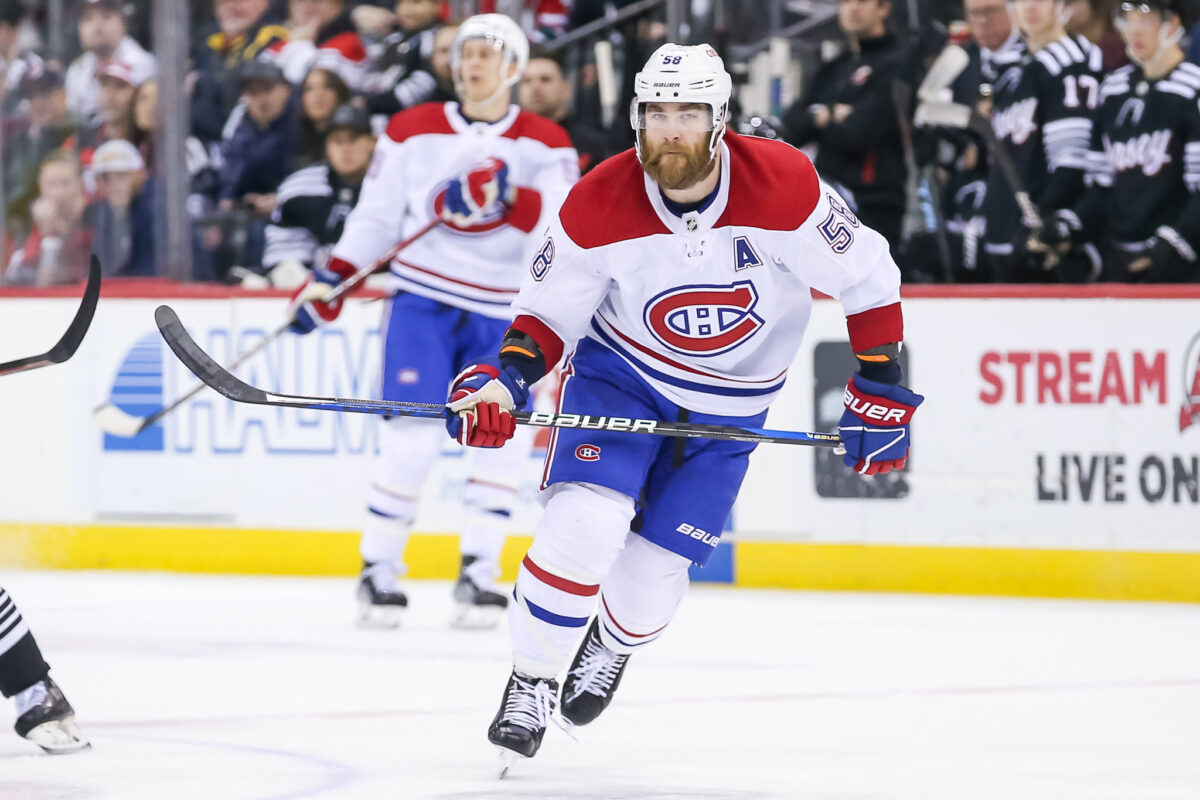Montreal Canadiens general manager (GM) Kent Hughes has a plan, and the patience to implement that plan. Fans and media alike can be critical, disagree, or even dislike that plan, but there is no denying that every decision has made sense when explained by Hughes. Part of that plan involves maximizing assets.
Related: Canadiens Rebuild Rests on Cap Management
There will be top ten draft picks, multiple first-round picks, young promising prospects and even the trade values of the NHL roster players that aren’t part of the core. However, this piece looks at maximizing the depth of the prospect pool. Not every player will be able to make it to the Canadiens NHL roster, and others may not have high hopes of getting a legitimate opportunity to prove their value. It’s those assets that become a wild card and could be turned into something more.
Canadiens Setting the Stage
Before Hughes can gamble on a wild card, he needs to build a culture that fosters accountability. That is essential for individual player development. That development will need to be nurtured in an environment that the player has bought into. This is why it is important to build a team culture, and the environment they’ve created has helped to influence the players to take ownership of their development. Why mention this? The fact that Hughes isn’t doing a fire sale, shedding his veterans for anything he can get, he allows them to bring value to the club through their mentorship, acting as another layer of coaching.

For example, David Savard remains with Montreal. Hughes said he wasn’t looking to trade the 33-year-old but did add that he wasn’t untouchable and was listening to offers. He decided that the offers never outstripped the value that keeping Savard would bring. This buys the young players like Arber Xhekaj, possibly even Lane Hutson, a quality veteran to learn from as he heads into the final season of his contract with a salary-cap hit of $3.5 million. This type of patient move trickles down the organization, allowing for any player brought in to benefit from this.
Canadiens Deadline Points to Future Moves
Just about every NHL GM goes bargain bin hunting for hidden gems. Former GM Marc Bergevin was mocked for doing this, perhaps because it seemed like a wild gamble. When a player is available for cheap, it’s often because they lack something that lets them find their role in the NHL. Maybe it’s personal problems, their play or it could be a lack of a “fit” with the organization. No matter what, it is a gamble, but in these cases, rarely an expensive one.
A change of scenery is sometimes all a player needs. It can break the routine, and reignite personal motivation, to prove their detractors wrong or to show the new organization was right in making the deal. This kind of shake-up could also get rid of any mental fatigue the player felt, reducing their stress, in turn, allowing them to play more freely to the skills and creativity that got them drafted in the first place.
The Canadiens’ rebuild is entering a time when they will be using low-level prospects, who have minimal hopes of becoming an NHL player in Montreal, or a very late pick, to buy a lottery ticket in the form of a boom or bust prospect in need of a change of scenery. Even if this lottery ticket is a bust, in the end, all it cost was an asset that had no real future in the organization.
Canadiens Take a Gamble
If a draft pick is a lottery ticket, then a reclamation project is like a 50/50 draw. You didn’t pay much to play, but if your numbers hit, you win big. This is why the deadline day trade of Jan Mysak for Jacob Perreault could give a preview of what is to come in Hughes’ rebuild plans as he uses his depth prospects to roll the dice on a higher ceiling player that is a boom or bust. It is no secret that Hughes loves to bring in former first-round picks who have floundered elsewhere as reclamation projects, like Denis Gurianov. Perrault fits that mould as well, having been an Anaheim Ducks first-round pick in 2020, and having had some issues that left him on the outside of that management team’s plans.

Perreault was an ideal “buy low” candidate. He was moved for a “safe” player, one who has a higher percentage of becoming a bottom-six NHL player than Perreault has of making it to the NHL. However, if he does make it, he becomes a forward who can add to the offensive depth in a top nine. For Montreal, moving Mysak means losing a bottom-six player from their American Hockey League (AHL) affiliate for someone who could become a top-of-the-lineup AHL player. But that isn’t the ultimate hope when making a move like this, Hughes hopes his gamble pays off and he gets an NHL asset. The addition of Perreault is low-risk as he still has one more season on his entry-level contract (ELC) and is waiver-exempt. It also shows that the Canadiens aren’t looking to just add picks that will take years to arrive but players of different ages to help stagger the experience level and contract years of those in the organization.
Another reason to take this gamble on a former first-round pick is that the odds are that Montreal will be picking in the top 10 at the NHL Entry Draft again this summer, possibly even the top five. In that range, they could draft a player who could become that missing core piece in the top six, like Ivan Demidov, Berkly Catton or Cayden Lindstrom. But those players would take a year or two before taking that next step into the NHL, making the Winnipeg Jets 2024 first-round pick an excellent trade chip for Hughes to bring in someone that helps now, and in the long term.
“I guess we’ve been buyers to a certain degree at the drafts and been sellers at the trade deadline. If we see another opportunity again at the draft, we’ll look to continue that path.”
– Kent Hughes
Using high picks to add to the core is one way that Stanley Cup teams are built, adding stars that can be relied upon to win games. However, even stars need support and Perreault has odds that are slightly higher than a third-round pick of becoming exactly that. Hughes isn’t just grabbing bad players for a cheap rate just to fill a hole somewhere way down his depth chart. He’s looking for players who have played well but have been unlucky with their injuries or the situation they play in. Hughes is betting on buying low and watching the player improve with more usage in a different environment. This strategy will begin to be played out more and more as the team’s core is filled with higher-value assets and the very large pool of prospects begins to compete for the few remaining positions.
